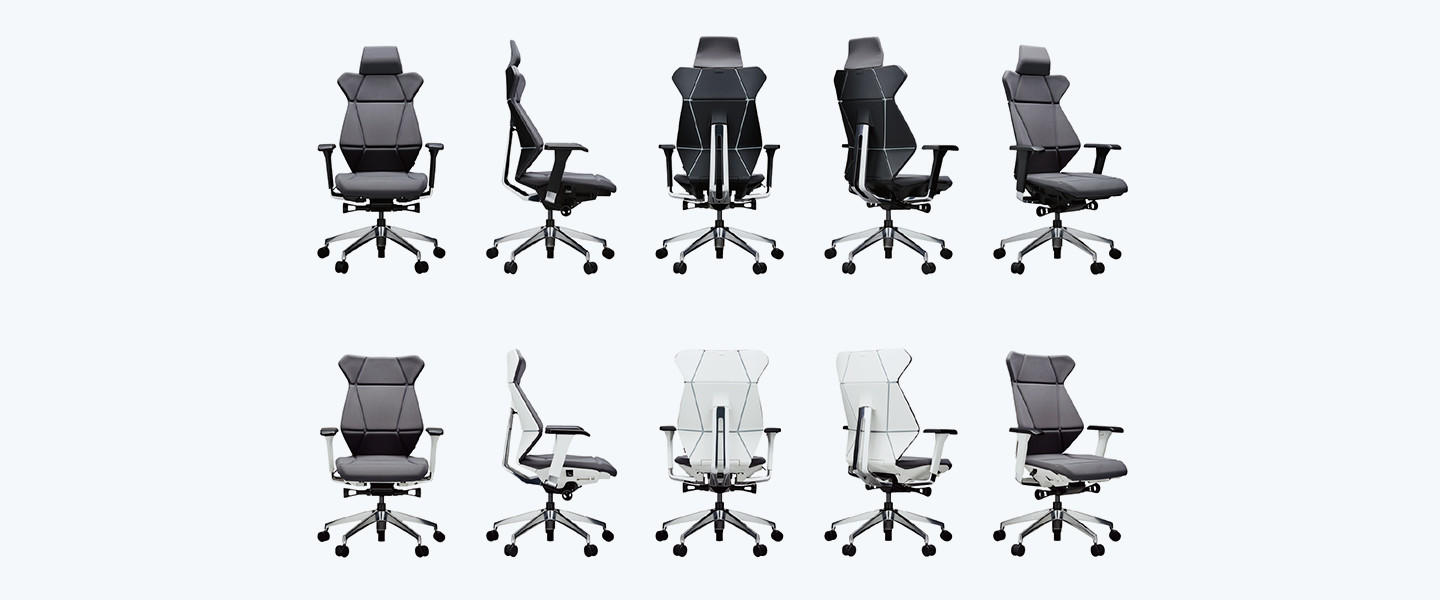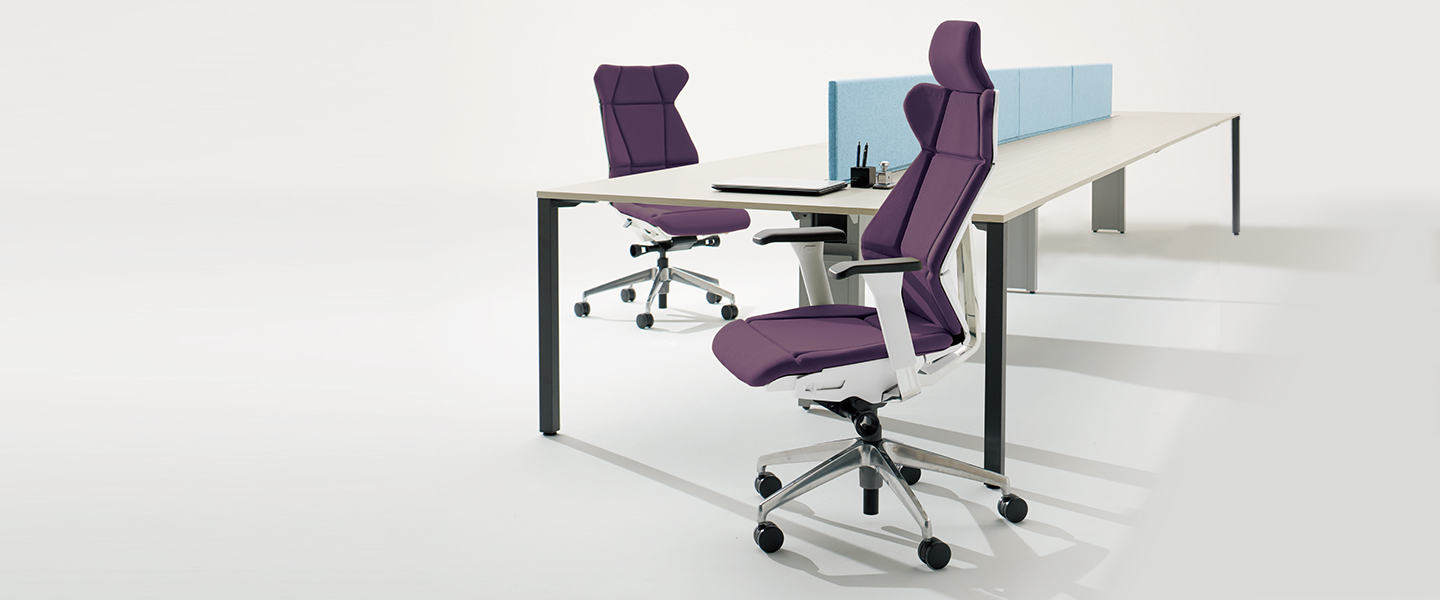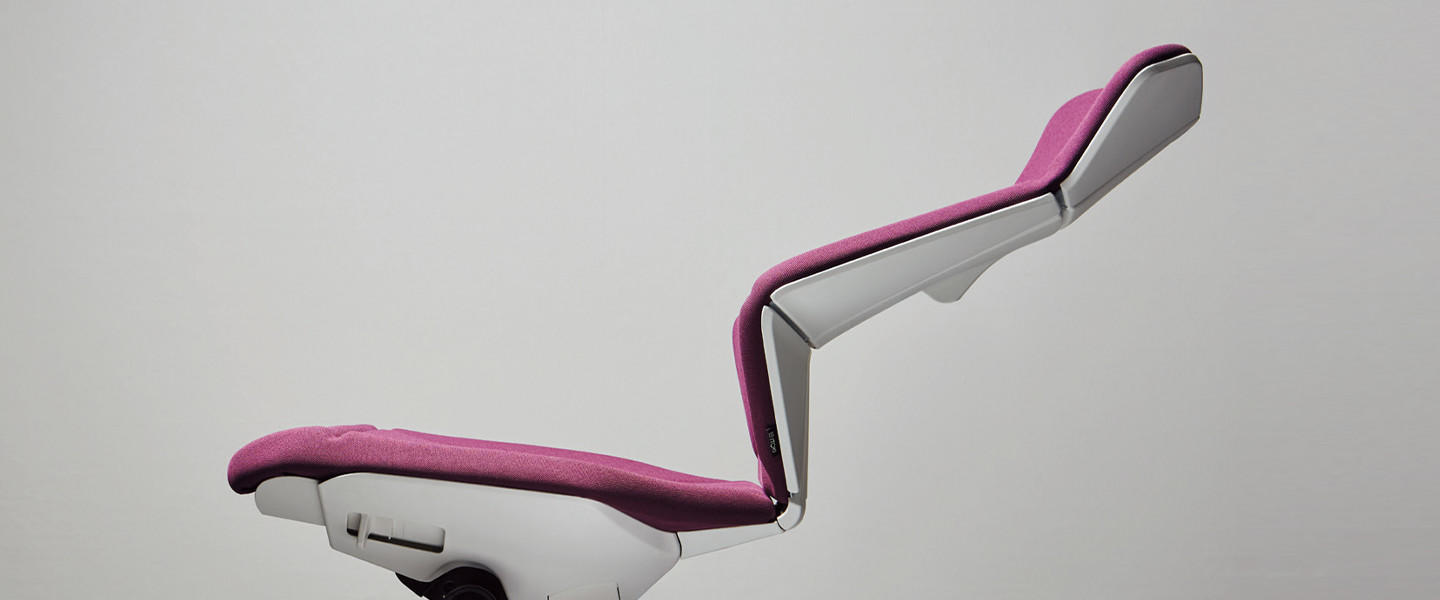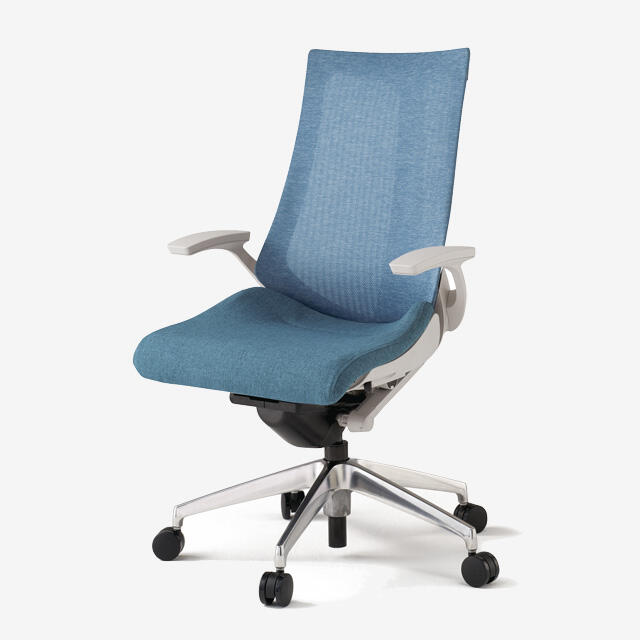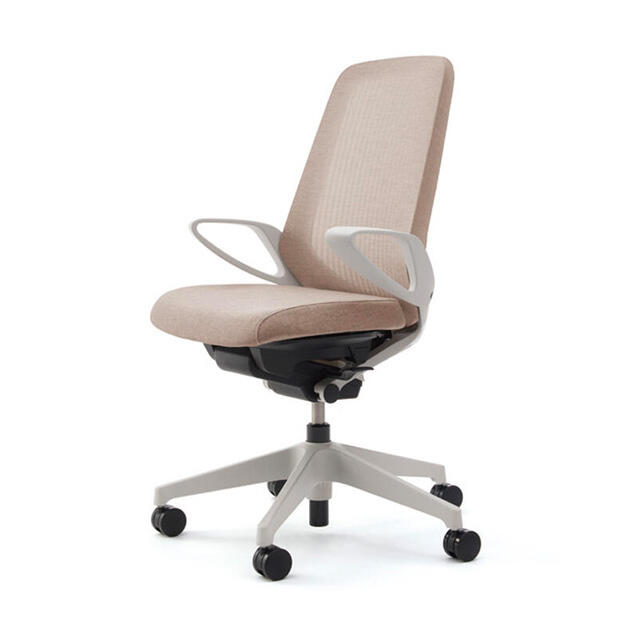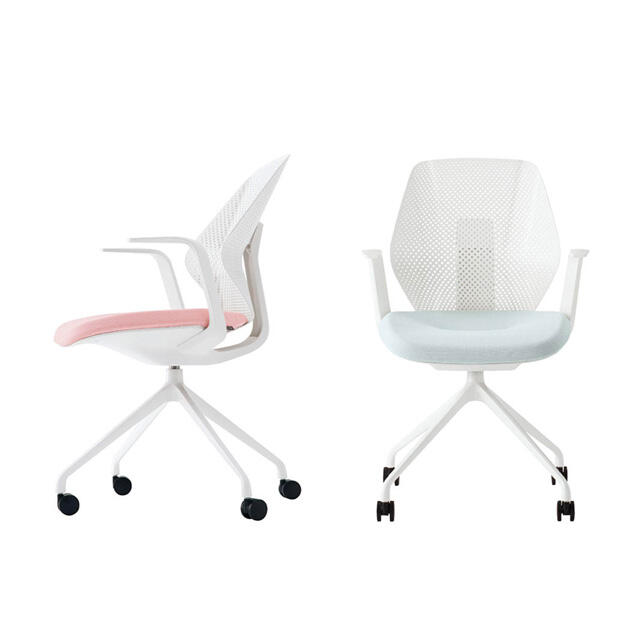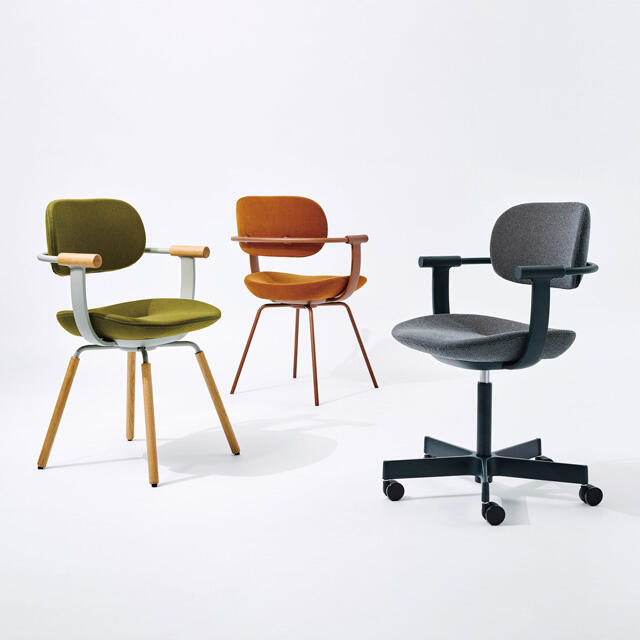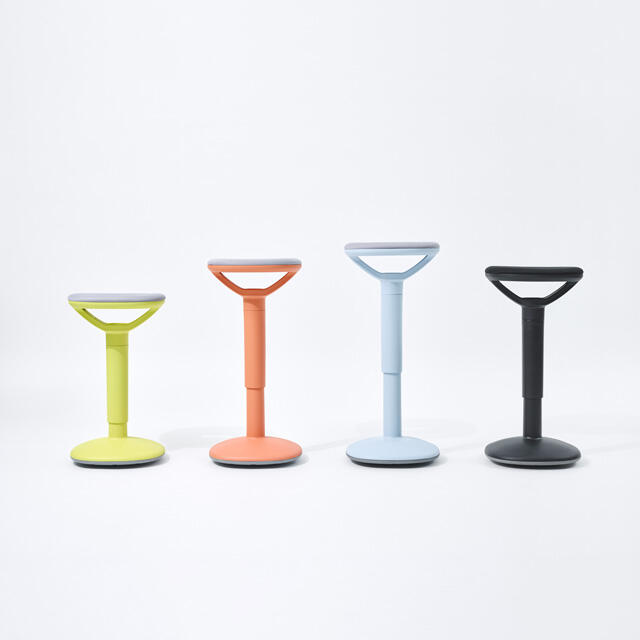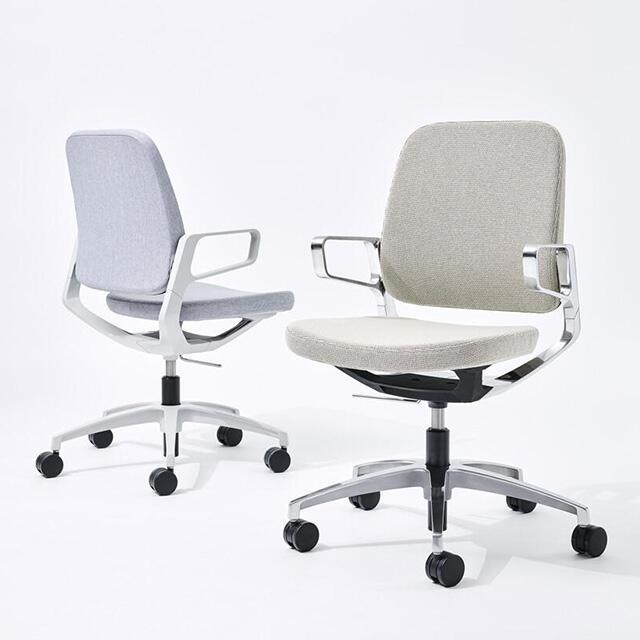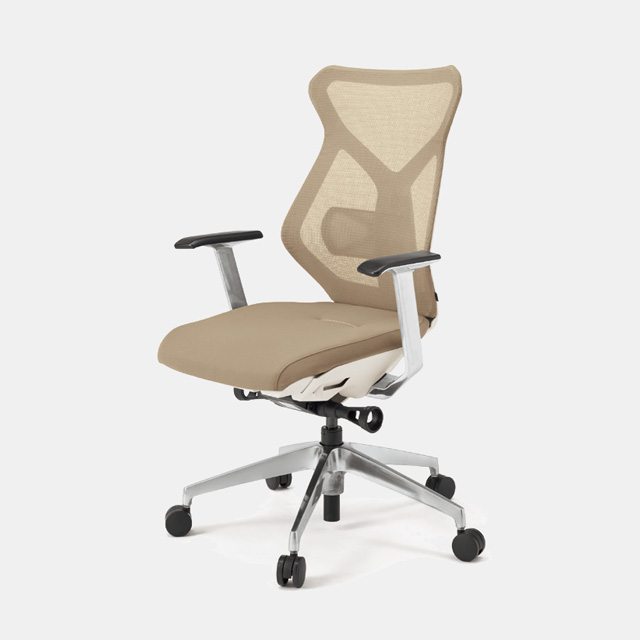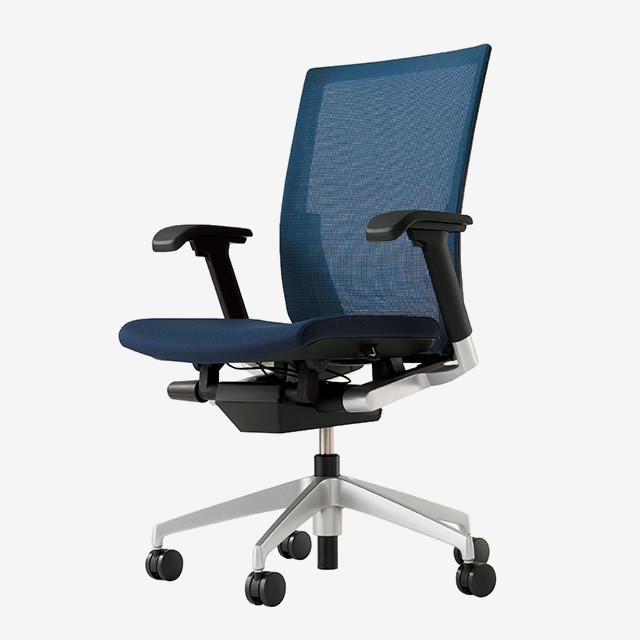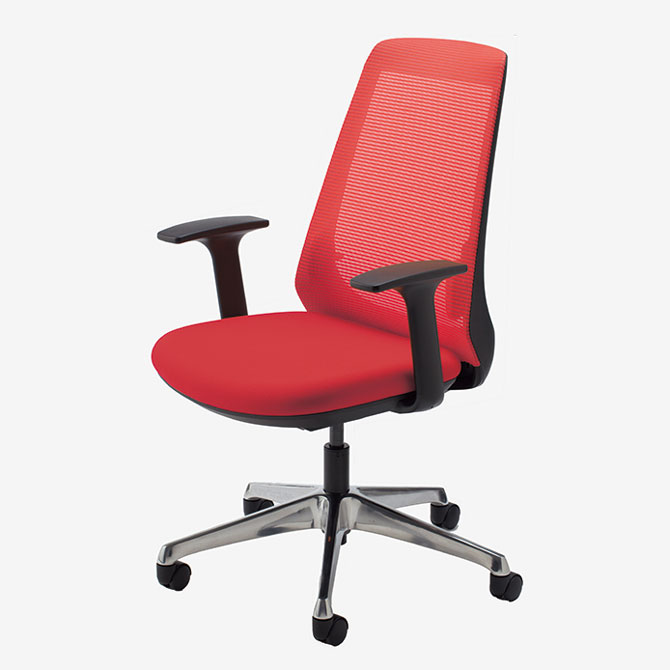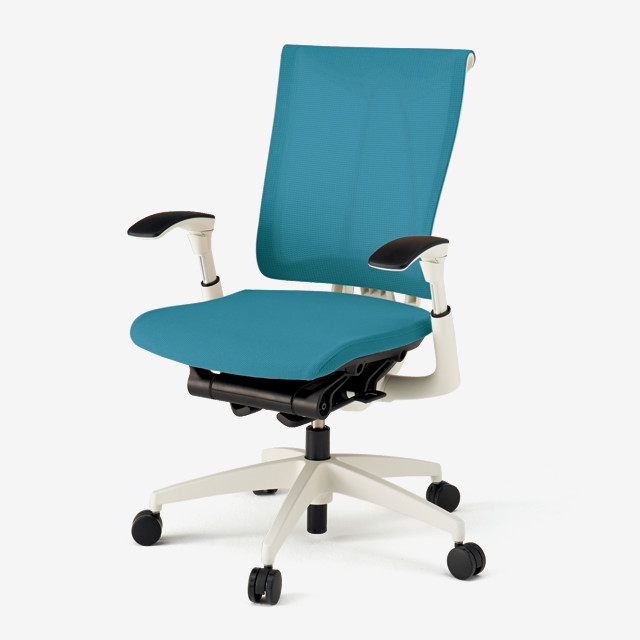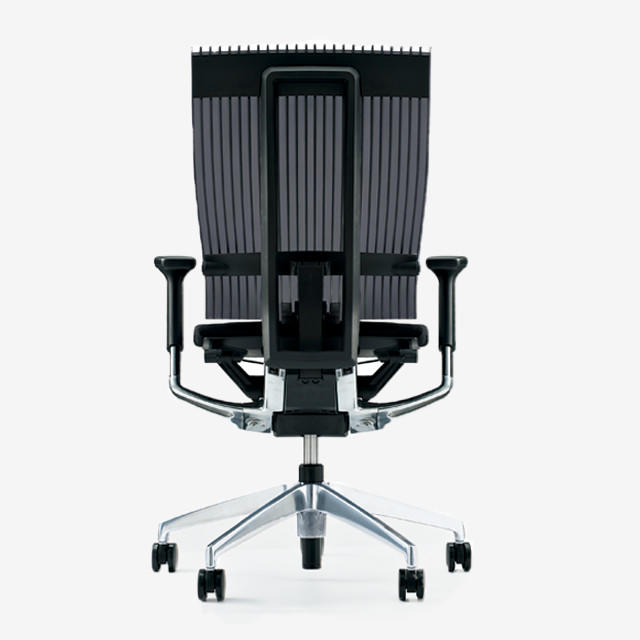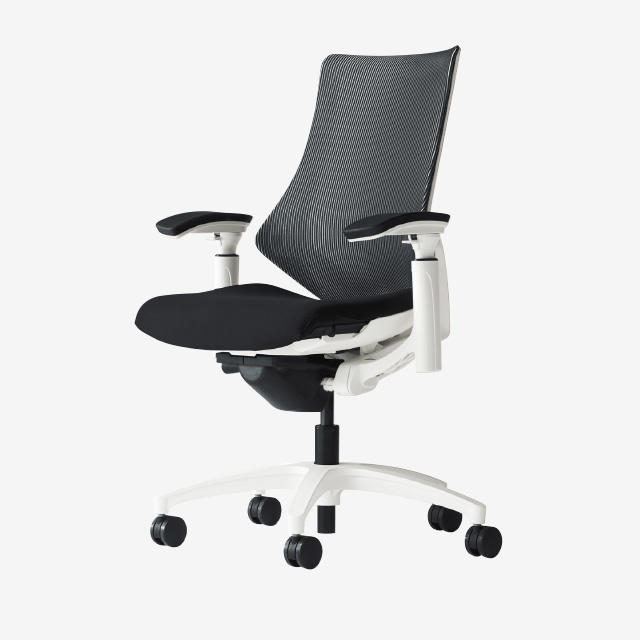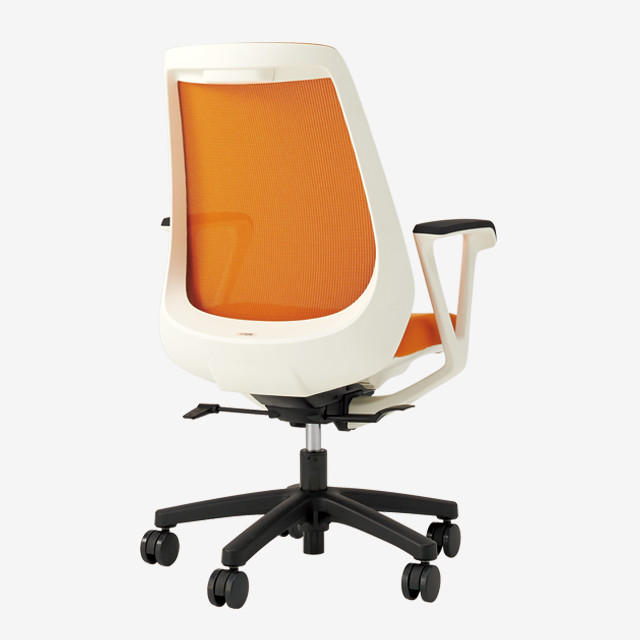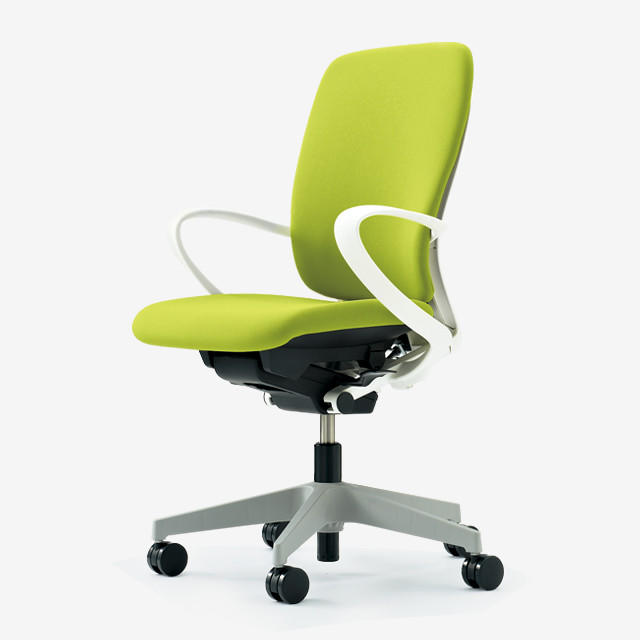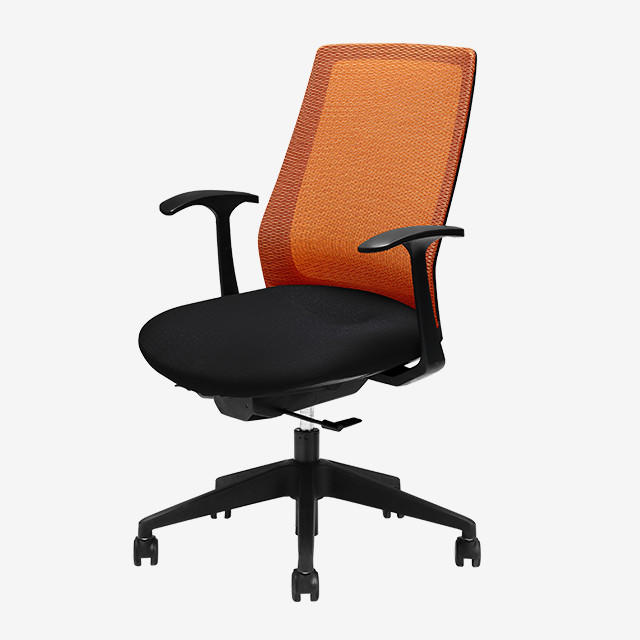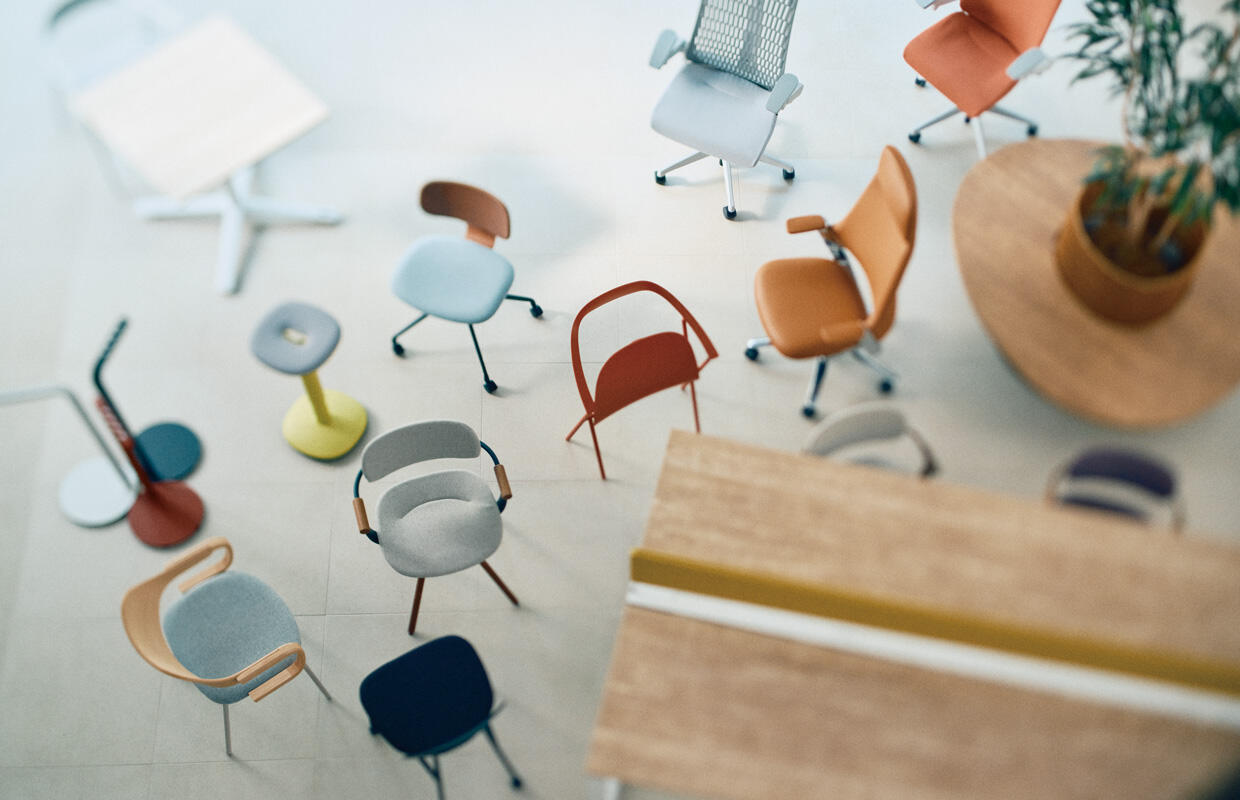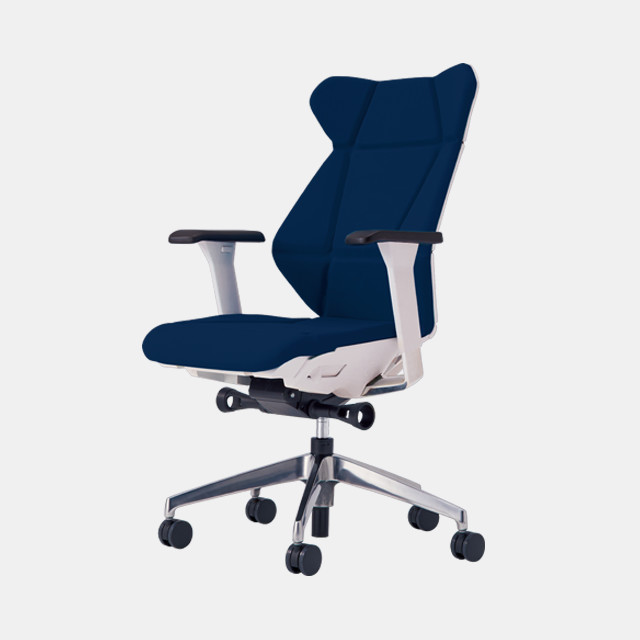
A sense of unity created by linked panels.
A new sensation chair that supports posture in three dimensions.
The idea for the Flip Flap Chair came from origami (origami is the Japanese word for paper folding). The way the chair folds and bends in three dimensions matches the movements of the body, supporting it in every work situation.
The Chair Transforms to Support the Posture in a Variety of Work Situations.
During a day of deskwork, posture can take many forms. Sitting up straight, stretching the arms and back, leaning forward, leaning back, and twisting the body to look around. The Flip Flap Chair naturally transforms to support the body continuously through these many changes in posture.
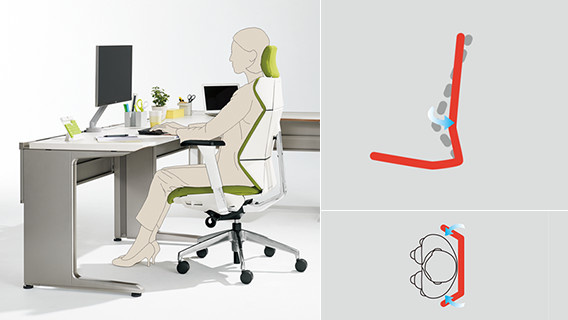
Hard at work (Concentrating)
During the morning period, when concentration is at its best, sitting up straight allows the chair to support the lower back from the back and sides, keeping the back stable and supporting concentration.
(Closed “supporting”)
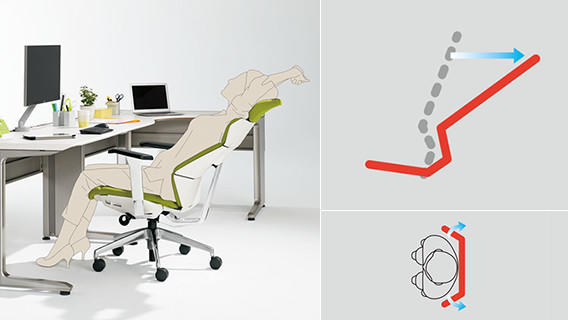
Breaks (Refreshing)
When periods of concentration continue, the body begins to get stiff. At these times, stretching the upper body causes the chair to change shape, allowing the sides of the lower back to open, releasing the back and allowing the body to be in a relaxed posture.
(Open “releasing”)
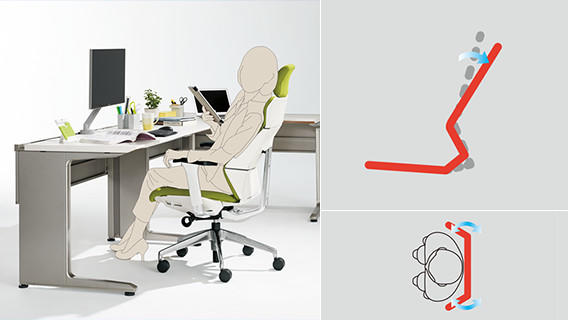
Communication (Relaxing)
When communicating with a coworker in the next seat (change in the posture of the upper back), the chair in contact with the upper back flexes to continue to support the body.
(Twist “fit”)
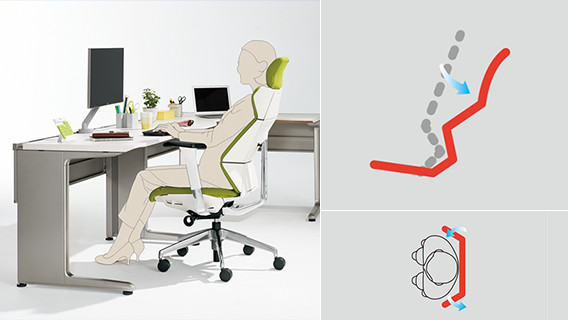
Hard at Work (Relaxed)
Long hours of deskwork can be done more efficiently by sitting in a relaxed posture. By sitting in the chair and leaning back slightly, the chair wraps around the lower back, fitting snugly and supporting a relaxed posture.
(Folding “enveloping”)
Dynamic Rocking Mechanism
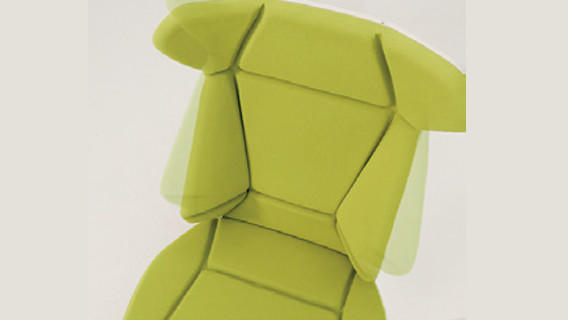
Pelvic Support System
The chair aligns with the angle of the back, side lumbar support cushions move, and it supports the lower back from the side as well during work.
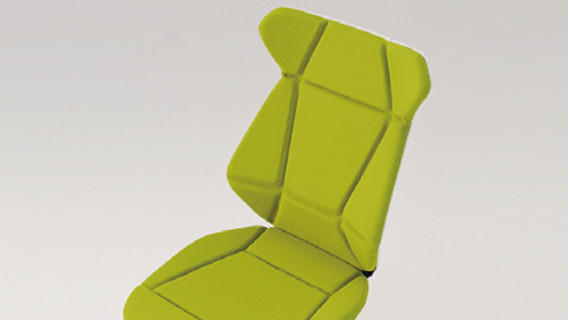
Gaps between Cushions
The shapes of the cushions correspond to the movement of the back.
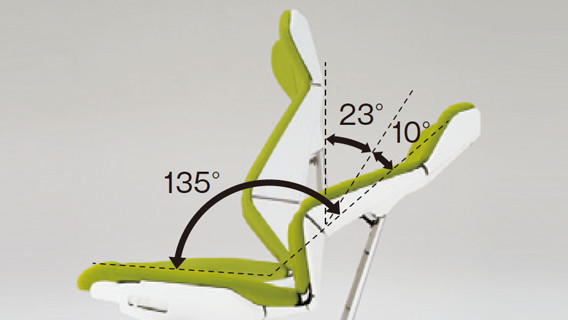
Large Reclining Angle
Rocking angle of 23°, pelvis support system 10° allows the body to stretch freely, approaching something close to a horizontal position for rest and refreshment.
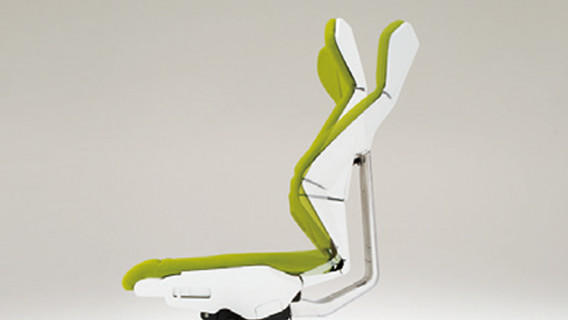
Seat that Links to the Back
The way the back and seat are linked eliminates the opening that appears when the back is stretched out, supporting the lower back.
Adjustable Armrest ? Long hours of keyboard or mouse use can cause a lot of strain on the neck, shoulders, and arms. This fatigue can be alleviated with the adjustable armrest. Elastomeric resin is used in the armrest, creating a soft and gentle texture.
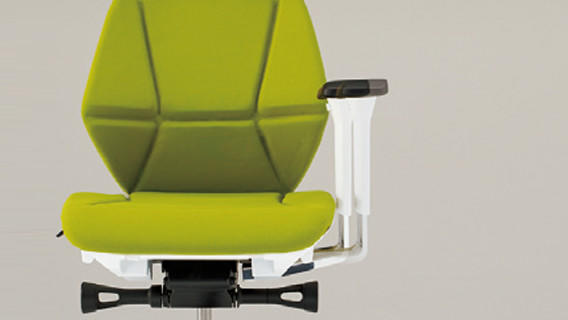
Armrest Width Adjustment
Upon installation, the armrests can be positioned up to 20mm wider on either side. (including T-type armrests)
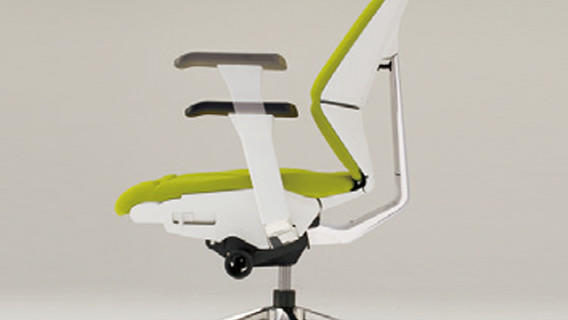
Armrest Height Adjustment
In order to adjust for individual physical differences, the armrest can be adjusted to ten different increments (approx. 10mm each) in height of pitch, for an adjustment range of 100mm.
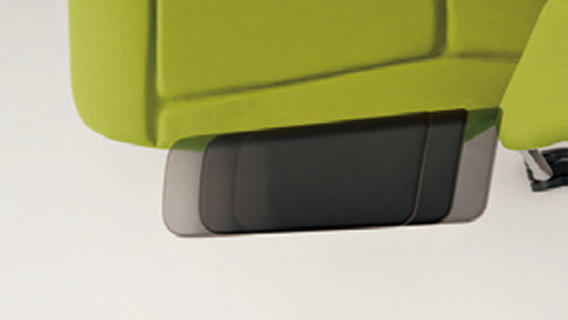
Fore-aft Adjustment of Armrest Position
In order to adjust the armrests to fit the user’s working posture, they can be moved up to 50mm to the fore and aft.
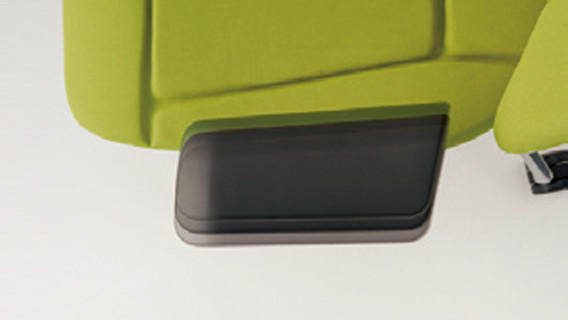
Left-right Adjustment of Armrest Position
In order to adjust for individual physical differences, the armrests can be adjusted 12.5mm to both the right and left, for a total of 25mm possible adjustment. Maximum adjustment for both elbows is a total of 50mm.
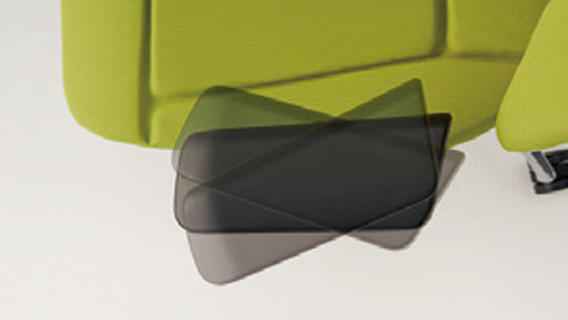
Armrest Angle Adjustment
The angle of the armrests can be adjusted up to 10° towards the outside and 20° towards the inside for a total of 30° rotating adjustment that can be made to suit the user's working posture.
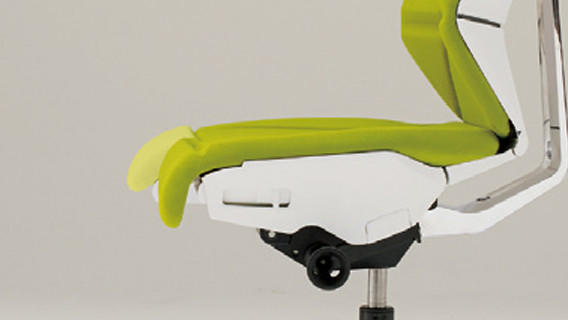
Seat Depth Adjustment
By using the lever under the seat, the positioning can be adjusted to fit the user’s body while sitting in the chair. The front part of the seat is folded, interlocking with the bending seat. (Adjustment width 75mm)
This product is GREENGUARD certified.

Gallery
This product name is the brand name that is used in Japan.

